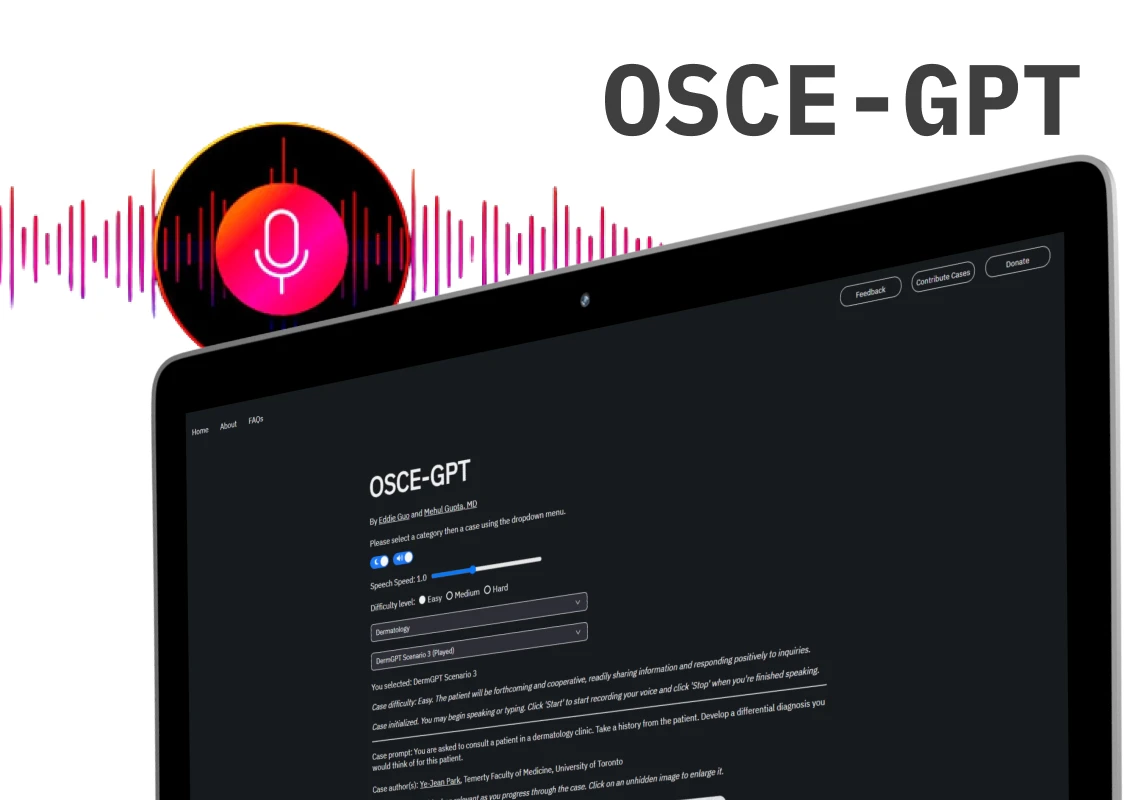Quick Summary
This comprehensive guide provides a detailed overview of MVP (Minimum Viable Product) development. It explores its significance, benefits, types, tools, costs, challenges, and real-world examples. Whether you are a startup founder, an entrepreneur, or a business leader, this guide will equip you with the knowledge to build a successful MVP that aligns with your business goals and user needs.
Introduction
Launching the perfect product on the first attempt is nearly impossible. A Minimum Viable Product (MVP) is a strategic tool that allows businesses to validate their ideas with minimal investment. By testing the core functionalities and gathering user feedback, companies can refine their products to meet market demands efficiently. This guide delves into the essentials of MVP development, providing actionable insights and expert advice to help you succeed.
What is MVP?
A Minimum Viable Product (MVP) is a development approach that involves creating a simplified version of a product with just enough core features to address a specific problem or meet the primary needs of early users. The purpose of an MVP is to test the product idea, gather user feedback, and validate market demand with minimal resources and development time.
By focusing on the essential functionalities, businesses can quickly launch, measure performance, and iterate based on real-world insights. This strategy reduces risks, saves costs, and helps refine the product for future development phases while aligning closely with user expectations and market needs. Partnering with an experienced MVP Development Company can help ensure that your MVP is built efficiently and effectively, giving you a competitive edge in the market.
Why is MVP Development Important?
MVP development plays a pivotal role in modern product strategies. Here are some key reasons why it is essential:
- Risk Mitigation: Testing ideas early reduces the risk of investing in a product that doesn’t resonate with the market.
- Cost Efficiency: By focusing on critical features, you minimize the resources needed for initial development.
- User-Centric Approach: Early feedback ensures that the product evolves to meet actual user needs.
- Faster Time-to-Market: Launching an MVP allows you to establish a presence in the market quickly.
- Investor Attraction: A working MVP demonstrates potential and helps secure funding.
Benefits of Building an MVP
Building a Minimum Viable Product (MVP) is a smart strategy for startups and businesses aiming to launch a new product or service. Here are the key benefits of building an MVP:
1. Market Validation:
An MVP allows you to test your idea with real users, ensuring product-market fit before full-scale development, and reducing the risk of failure. Pre-requisites to consider before building your MVP include defining core features and choosing the right MVP development services.
2. Resource Optimization:
Focusing on core features helps you efficiently allocate time, budget, and manpower, avoiding unnecessary investments in non-essential aspects.
3. Early Revenue Generation:
By launching an MVP, you can start generating income from early users, funding future improvements, and reducing reliance on external funding.
4. Improved Focus:
Building an MVP forces you to concentrate on the product’s primary value proposition, delivering a more focused and effective solution to your target audience.
5. Data-Driven Decisions:
User feedback in shaping your MVP product development is essential. It helps you make informed decisions and prioritize future features based on real user needs and usage metrics.
When and Why You Need to Develop an MVP
Developing an MVP is ideal when:
- You are entering a new or untested market.
- Introducing a groundbreaking idea that requires validation.
- Solving a specific customer pain point and need rapid feedback.
- Operating with limited resources but want to demonstrate feasibility.
- Seeking to attract investors or secure stakeholder buy-in.
Types of MVP
There are various approaches to MVP development, each suited to different goals and contexts. Here are six common types:
- Wizard of Oz MVP: Simulates automated processes manually to test user interactions.
- Concierge MVP: Offers a highly personalized experience to gauge user interest and gather insights.
- Landing Page MVP: Uses a simple webpage to measure demand and attract early adopters.
- Piecemeal MVP: Combines existing tools and technologies to build a functional prototype.
- Single Feature MVP: Focuses on excelling in one primary feature to showcase value.
- Prototype MVP: Creates a tangible, interactive model for user testing.
Quick Read: POC vs MVP
How to Build a Successful MVP
Creating an MVP requires careful planning and execution. Follow these seven steps to ensure success:
Step 1: Define the Problem and Your Target Audience
The foundation of any successful MVP lies in understanding the problem it solves and who benefits from the solution. An unclear problem definition or lack of audience understanding can lead to building a product that misses the mark.
- Define the Problem:
Start by articulating the problem your product addresses. A well-defined problem is specific, measurable, and meaningful to your target audience.
- Example: Instead of saying “help people save money,” narrow it down to “help millennials save money on monthly subscriptions through personalized recommendations.”
- Understand Your Audience:
Identify your target audience by considering demographics (age, gender, location) and psychographics (behavior, interests, challenges). Create user personas to represent your ideal customers.
Deliverable: A well-documented problem statement and user personas to guide development.
Step 2: Outline Core Functionalities
An MVP is not about delivering a fully-fledged product but solving the core problem effectively. Determining what goes into your MVP requires careful prioritization.
Feature Prioritization:
List all possible features your product might have and categorize them based on necessity. Tools like the MoSCoW method (Must-Have, Should-Have, Could-Have, Won’t-Have) can help you focus.
Example for a Subscription Management App:
- Must-Have: Subscription tracking, personalized recommendations
- Should-Have: Expense reports
- Could-Have: Integration with budgeting apps
- Won’t-Have: Social sharing features
Avoid Feature Creep:
Resist the temptation to include additional features in the MVP phase. Focus only on what delivers value to users immediately.
Deliverable: A clear roadmap of prioritized features for the MVP.
Step 3: Conduct Competitive Analysis
Understanding the competitive landscape helps you position your MVP strategically. Analyze what competitors are doing well and identify gaps in the market that your MVP can fill.
Research Methods:
Use SWOT analysis to evaluate competitors. For example:
- Strength: User-friendly design
- Weakness: Limited subscription categories
- Opportunity: Add AI-based recommendations
- Threat: Established players with higher budgets
Learn from Their Mistakes:
Study user reviews of similar products to uncover recurring complaints or unaddressed needs.
Deliverable: A competitive analysis report highlighting your MVP’s unique selling points.
Step 4: Create a Prototype or Wireframe
A prototype or wireframe allows you to visualize the product and test user flows before diving into development. This step saves time and resources by validating your idea early.
- Low-Fidelity Wireframes:
Start with simple sketches or wireframes to outline the layout and functionality. Tools like Figma, Adobe XD, or Sketch are excellent for this purpose.
Example: Design the home screen to display subscription lists and a “Cancel Subscription” button.
- Interactive Prototypes:
Develop an interactive prototype to simulate user interactions. This allows stakeholders and early adopters to experience the product and provide feedback.
Deliverable: A prototype that communicates the product’s core functionalities and user experience.
Step 5: Develop Your MVP
This is where the actual development begins. Choose technologies and methodologies that support rapid iteration and scalability.
Technology Stack:
Select a technology stack based on your project’s requirements. For instance:
- Frontend: React.js or Vue.js
- Backend: Node.js or Django
- Database: MongoDB or PostgreSQL
Use Agile Development:
Implement agile methodologies to ensure flexibility and adaptability during development. Break the process into sprints and review progress regularly.
No-Code/Low-Code Options:
For quicker development, consider platforms like Bubble.io, Webflow, or Glide. These are especially useful for startups testing ideas with limited resources.
Deliverable: A functional MVP ready for testing.
Step 6: Test and Gather Feedback
Testing your MVP is crucial to identifying usability issues and validating your assumptions. It provides actionable insights for improvement.
Launch to a Test Audience:
Introduce the MVP to a small group of early adopters who match your target audience. This can be done through beta testing or soft launches.
Collect Feedback:
Use tools like Hotjar or Mixpanel to track user behavior and identify pain points. Combine this data with direct feedback from surveys or interviews.
Questions to Ask:
- “What feature did you find most useful?”
- “What challenges did you face while using the app?”
Deliverable: A feedback report outlining user satisfaction and areas for improvement.
Step 7: Iterate and Improve
Iterate based on the feedback received to enhance the product. This step focuses on refining the MVP and adding features incrementally.
- Prioritize Improvements:
Address critical issues first, such as usability bugs or missing essential features. Use the feedback to guide your development roadmap.
- Continuous Testing:
Maintain an ongoing feedback loop with users to ensure your iterations align with their needs.
Deliverable: An improved MVP that’s ready for broader market adoption.
Tools and Technologies for MVP Development
Here are key considerations and recommendations for choosing the ideal technology stack for MVP development:
1. Programming Languages:
- JavaScript (Node.js, React, Angular): JavaScript is widely used for web-based MVPs due to its versatility, large developer community, and robust frameworks like Node.js for server-side and React or Angular for front-end development.
- Python (Django, Flask): Python is popular for its simplicity and readability, making it ideal for rapid prototyping. Frameworks like Django and Flask provide powerful tools for building web applications efficiently.
2. Database Management:
- SQL Databases (PostgreSQL, MySQL): SQL databases are reliable and widely supported for MVP development. They offer strong data integrity and scalability, making them suitable for most projects.
- NoSQL Databases (MongoDB, Redis): NoSQL databases are preferred for projects requiring flexible schema design and high scalability, such as real-time applications or those dealing with large volumes of unstructured data.
3. Cloud Services:
- Amazon Web Services (AWS), Google Cloud Platform (GCP), Microsoft Azure: Leveraging cloud services provides scalability, reliability, and cost-efficiency. AWS, GCP, and Azure offer a comprehensive suite of services, including hosting, storage, databases, and machine learning tools.
4. Frameworks and Libraries:
- React Native, Flutter: For mobile app MVPs, cross-platform frameworks like React Native and Flutter enable rapid development for both iOS and Android platforms, reducing time-to-market and development costs.
- Express.js, Flask: Lightweight web frameworks such as Express.js (Node.js) and Flask (Python) are ideal for building RESTful APIs and backend services efficiently.
5. DevOps and Automation:
- Docker, Kubernetes: Containerization tools like Docker and orchestration platforms like Kubernetes streamline deployment and scalability, ensuring consistency and reliability across different environments.
- Continuous Integration/Continuous Deployment (CI/CD) Pipelines: Implementing CI/CD pipelines with tools like Jenkins or GitLab CI automates the development, testing, and deployment process, accelerating delivery and minimizing errors.
6. Security and Authentication:
- OAuth, JWT: Implementing secure authentication and authorization mechanisms is essential for MVPs. Technologies like OAuth and JSON Web Tokens (JWT) provide robust security features for user authentication and data protection.
7. Analytics and Monitoring:
- Google Analytics, Prometheus: Integrating analytics and monitoring tools allows you to gather insights into user behavior, application performance, and scalability metrics, enabling data-driven decision-making and continuous improvement.
8. Scalability and Performance:
- Microservices Architecture: For complex or scalable applications, adopting a microservices architecture allows you to decouple components, improve scalability, and facilitate independent deployment and scaling of services.
Successful MVP Examples
Successful MVP examples showcase how companies validate their ideas with minimal resources before scaling.
- Dropbox: Initially launched with a simple video demonstrating its file-syncing concept, Dropbox gathered interest and user feedback before developing its full feature set.
- Airbnb: Airbnb’s MVP involved renting out an air mattress in the founders’ apartment to validate the idea of people renting spaces. It proved the concept and laid the foundation for the platform’s growth.
- Zappos: Zappos started by testing the online shoe retail concept with a simple website showcasing shoes. Founders manually sourced and shipped products, validating demand before automating the process.
How Much Does It Cost to Build a Minimum Viable Product
The cost of developing an MVP depends on factors such as complexity, team location, and features. Generally, costs range from $10,000 to $50,000, with more complex solutions potentially requiring a higher budget. Collaborating with an experienced development team ensures value for your investment. Additionally, using a Software Development Cost Calculator can provide you with a free ballpark estimate for your MVP, helping you make informed decisions.
MVP Development Challenges and Effective Solutions
Building a Minimum Viable Product (MVP) can be a game-changer for startups, but it comes with its own set of challenges. Here’s a breakdown of common issues faced during MVP development and how to overcome them:
1. Scope Creep
- Solution: Stick to core features that align with your product’s value proposition. Prioritize based on user needs and feedback to avoid unnecessary additions.
2. Unclear Target Audience
- Solution: Define your target audience early. Create buyer personas to ensure your MVP addresses their specific pain points.
3. Resource Constraints
- Solution: Focus on essential features and consider using no-code/low-code platforms or outsourcing to optimize resource allocation.
4. User Feedback Loops
- Solution: Collect structured feedback through surveys, user testing, and analytics to make informed decisions and iterate on the product.
5. Time Constraints
- Solution: Set realistic timelines with enough time for testing and iteration. Use agile methods to manage development efficiently and keep the project on track.
How Can Creole Studios Help with MVP Building?
Creole Studios specializes in building tailored MVPs for startups and established businesses. With expertise in cutting-edge technologies and a user-centric development approach, Creole Studios ensures that your MVP aligns with your business objectives and resonates with your target audience. Their team’s commitment to quality and innovation makes them an ideal partner for MVP development. Simply book a 30-minute free consultation, and we’ll discuss your requirements, and goals, and provide a tailored roadmap for your project.
Conclusion
Building an MVP is a strategic investment that lays the foundation for long-term product success. By focusing on essential features, engaging users early, and iterating based on feedback, businesses can minimize risks and maximize opportunities. Collaborating with experts like Creole Studios can further streamline the process, ensuring that your MVP meets both user expectations and market demands.
FAQs
- What is an MVP in software development?
Ans: An MVP is a minimal version of a product that delivers core functionalities and gathers user feedback for improvement. - How long does it take to develop an MVP?
Ans: The development timeline typically ranges from 2-4 months, depending on complexity and team expertise. - What is the difference between an MVP and a prototype?
Ans: A prototype is a preliminary model for visualizing concepts, whereas an MVP is a functional product for real-world use and testing. - How do I choose the right MVP development team?
Ans: Look for a team with proven experience, technical expertise, and a collaborative approach to align with your vision and goals. - How do I start my MVP Development project with you?
Ans: To start your MVP Development project with us, simply book a 30-minute free consultation. We’ll discuss your requirements, and goals, and provide a tailored roadmap for your project. Let’s get started today!














 30 mins free Consulting
30 mins free Consulting 
 10 min read
10 min read 


 Canada
Canada 
 USA
USA 






 Love we get from the world
Love we get from the world 